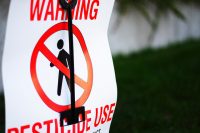Last week, the 4th annual Emerald Conference brought attendees from around the world to San Diego for two days of education, networking and collaboration. Leading experts from across the industry shared some of the latest research in sessions and posters with over 600 attendees. The foremost companies in cannabis testing, research and extraction brought their teams to exhibit and share cutting edge technology solutions.

The diversity in research topics was immense. Speakers touched on all of the latest research trends, including tissue culture as a micropropagation technique, phenotype hunting, pharmaceutical product formulation, chromatography methods and manufacturing standards, to name a few.
On the first day of the event, Ken Snoke, president of Emerald Scientific, gave his opening remarks, highlighting the importance of data-driven decisions in our industry, and how those decisions provide the framework and foundation for sound progress. “But data also fuels discovery,” says Snoke, discussing his remarks from the event. “I told a story of my own experience in San Diego almost 30 years ago while working in biotech, and how data analysis in a relatively mundane and routine screening program led to discovery. And how we (the folks at Emerald) believe that when we get our attendees together, that the networking and science/data that comes from this conference will not only support data-driven decisions for the foundation of the industry, but it will also lead to discovery. And that’s why we do this,” Snoke added.

Snoke says the quality of the content at the poster session was phenomenal and engaging. “We had over 500 attendees so we continue to grow, but it’s not just about growth for us,” says Snoke. “It’s about the quality of the content, and providing a forum for networking around that content. I met a scientist that said this conference renewed his faith in our industry. So I firmly believe that the event has and will continue to have a profound and immensely positive impact on our industry.”
Introducing speakers as one of the chairs for first session focused on production, Dr. Markus Roggen says he found a number of speakers delivered fascinating talks. “This year’s lineup of presentations and posters really showcase how far the cannabis industry has come along,” says Dr. Roggen. “The presentations by Roger Little, PhD and Monica Vialpando, PhD, both showed how basic research and the transfer of knowledge from other industries can push cannabis science forward. Dr. Brian Rohrback’s presentation on the use of chemometrics in the production of pharmaceutical cannabis formulations was particular inspiring.”

Shortly after Snoke gave his opening remarks, Dr. Roggen introduced the first speaker, Roger Little, Ph.D., owner of CTA, LLC. He presented his research findings on phenotype hunting and breeding with the help of a cannabis-testing laboratory. He discussed his experience working with local breeders and growers in Northern California to identify high-potency plants early in their growth. “You can effectively screen juvenile plants to predict THC potency at harvest,” says Dr. Little. The other research he discussed included some interesting findings on the role of Methyl jasmonate as an immune-response trigger. “I was looking at terpenes in other plants and there is this chemical called methyl jasmonate,” says Dr. Little. “It is produced in large numbers of other plants and is an immune response stimulator. This is produced from anything trying to harm the plant such as a yeast infection or mites biting the stem.” Dr. Little says that the terpene has been used on strawberries to increase vitamin C content and on tobacco plants to increase nicotine content, among other uses. “It is a very potent and ubiquitous molecule,” says Dr. Little. “Cannabis plants’ immune-response is protecting the seeds with cannabinoid production. We can trick plants to think they are infected and thus produce more cannabinoids, stimulating them to produce their own jasmonate.”
Dr. Hope Jones, chief scientific officer of C4 Laboratories, spoke about tissue culture as an effective micropropagation technique, providing attendees with a basic understanding of the science behind it, and giving some estimates for how it could effectively replace cloning and the use of mother plants. You could overhear attendees discussing her talk throughout the remainder of the show.

Dr. Jones has worked with CIJ on a series of articles to help explain cannabis tissue culture, which you can find here. “In this example, we started with one vessel with 4 explants,” says Dr. Jones. “Which when subcultured 4-6 weeks later, we now have 4 vessels with 16 plants.” She says this is instrumental in understanding how tissue culture micropropagation can help growers scale without the need for a ton of space and maintenance. From a single explant, you can potentially generate 70,000 plants after 48 weeks, according to Dr. Jones.
Those topics were just the first two of many presentations at Emerald Conference. You can take a look at some of the other presentation abstracts in the agenda here. The 5th Annual Emerald Conference in 2019 will be held February 28th through March 1st in San Diego next year.



















 According to Susan Bunce, president of DB Labs, ISO accreditation is one way the cannabis lab space is being standardized. “As the first cannabis-testing laboratory in Nevada, DB Labs has always taken patient safety very seriously and has always tried to raise the bar,” says Bunce. “The world of cannabis testing is often compared to the Wild West: each lab uses state regulations to set their standards, but it leaves a lot of room for subjective interpretations. The ISO accreditation removes the ambiguity and guarantees a consistent level of testing to users. We are proud to be a part of that.”
According to Susan Bunce, president of DB Labs, ISO accreditation is one way the cannabis lab space is being standardized. “As the first cannabis-testing laboratory in Nevada, DB Labs has always taken patient safety very seriously and has always tried to raise the bar,” says Bunce. “The world of cannabis testing is often compared to the Wild West: each lab uses state regulations to set their standards, but it leaves a lot of room for subjective interpretations. The ISO accreditation removes the ambiguity and guarantees a consistent level of testing to users. We are proud to be a part of that.”






 In reality, according to a
In reality, according to a 








